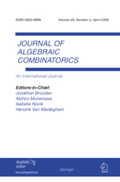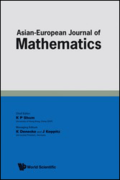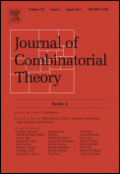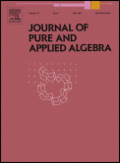
Journal of Algebraic Combinatorics 38 (2013), 543–566
Preprint
We show that a recent identity of Beck–Gessel–Lee–Savage on the generating function of symmetrically constrained compositions of integers generalizes naturally to a family of convex polyhedral cones that are invariant under the action of a finite reflection group. We obtain general expressions for the multivariate generating functions of such cones, and work out their general form more specifically for all symmetry groups of type A (previously known) and types B and D (new). We obtain several applications of these expressions in type B, including identities involving permutation statistics and lecture hall partitions.

Asian-European Journal of Mathematics 6 (2013), 1350003
Preprint
We determine the covariance of the weight distribution in level 1 Demazure modules of \(\widehat{\mathfrak{sl}}_2\). This allows us to prove a weak law of large numbers for these weight distributions, and leads to a conjecture about the asymptotic concentration of weights for arbitrary Demazure modules.

Journal of Algebraic Combinatorics 37 (2013), 361–380
Preprint
We study the generalized Galois numbers which count flags of length \(r\) in \(N\)-dimensional vector spaces over finite fields. We prove that the coefficients of those polynomials are asymptotically Gaussian normally distributed as \(N\) becomes large. Furthermore, we interpret the generalized Galois numbers as weighted inversion statistics on the descent classes of the symmetric group on \(N\) elements and identify their asymptotic limit as the Mahonian inversion statistic when \(r \to \infty\). Finally, we apply our statements to derive further statistical aspects of generalized Rogers–Szegő polynomials, re-interpret the asymptotic behavior of linear \(q\)-ary codes and characters of the symmetric group acting on subspaces over finite fields, and discuss implications for affine Demazure modules and joint probability generating functions of descent-inversion statistics.

Journal of Combinatorial Theory, Series A 118 (2011), 2454–2462
Preprint
Stanley (1986) showed how a finite partially ordered set gives rise to two polytopes, called the order polytope and chain polytope, which have the same Ehrhart polynomial despite being quite different combinatorially. We generalize his result to a wider family of polytopes constructed from a poset with integers assigned to some of its elements. Through this construction, we explain combinatorially the relationship between the Gelfand–Tsetlin polytopes (1950) and the Feigin–Fourier–Littelmann–Vinberg polytopes (2010), which arise in the representation theory of the special linear Lie algebra. We then use the generalized Gelfand–Tsetlin polytopes of Berenstein and Zelevinsky (1989) to propose conjectural analogues of the Feigin–Fourier–Littelmann–Vinberg polytopes corresponding to the symplectic and odd orthogonal Lie algebras.
This article has been presented at the 23rd International Conference on Formal Power Series and Algebraic Combinatorics (FPSAC 2011).

Transformation Groups 16 (2011), 1009–1026
Preprint
We compute the expected degree of a randomly chosen element in a basis of weight vectors in the Demazure module \(V_w(\Lambda)\) of \(\widehat{\mathfrak{sl}}_2\). We obtain en passant a new proof of Sanderson's dimension formula for these Demazure modules.

Journal of Pure and Applied Algebra 214 (2010), 1152–1164
Preprint
We introduce the notion of a chopped and sliced cone in combinatorial geometry and prove a structure theorem expressing the number of integral points in a slice of such a cone by means of a vector partition function. We observe that this notion applies to weight multiplicities of Kac–Moody algebras and to Clebsch–Gordan coefficients for semisimple Lie algebras. This has algorithmic applications, as we demonstrate computing some explicit examples.

M. Dehmer, M. Drmota, F. Emmert-Streib (Hrsg.), Proceedings of the 2008 international conference on information theory and statistical learning, CSREA Press, 2008, S. 80–86
Preprint
We explicitly determine quasi-polynomials describing the weight multiplicities of the Lie algebra \(\mathfrak{so}_5(\mathbf{C})\). This information entails immediate complete knowledge of the character of any simple representation as well as the asymptotic behavior of characters.

Dissertation, Universität zu Köln, 2008
The author introduces the notion of a chopped and sliced cone and shows that the weight multiplicities of semisimple complex Lie algebras are governed by this notion. From this he derives a presentation of the weight multiplicity function as a composition of a vector partition function and a linear map. By virtue of this presentation he obtains structural and asymptotic properties of weight multiplicities; for example a proof of G. Heckman's theorem on the Duistermaat–Heckman measure is obtained in this way. The author describes an algorithm for computing general vector partition functions and gives an implementation as a Maple prototype. Using this program he determines and states the weight multiplicity function of the Lie algebra \(\mathfrak{so}_5(\mathbf{C})\) completely.

Diplomarbeit, Universität Karlsruhe (TH), 2005
We interpret the Bernoulli distributions as distributions on the Abelianization \(G_\mathbf{Q}^\mathrm{ab}\) of the absolute Galois group of \(\mathbf{Q}\). This generalizes to the case of an arbitrary number field \(K\) replacing \(\mathbf{Q}\). We construct non-Abelian versions of the Bernoulli distributions on the absolute Galois group \(G_K\). For these distributions we show a rationality property generalizing a theorem of Siegel and Klingen.
An English translation of part of the thesis is available as On generalized Bernoulli distributions and their rationality.

Mémoire de stage D.E.A., Université Grenoble 1, 2003
Nous décrirons l’algorithme de A. Lauder et D. Wan pour déterminer la fonction zêta d’une courbe d’Artin-Schreier sur un corps fini. Cet algorithme utilise des méthodes d’analyse \(p\)-adique pour obtenir une complexité polynomiale.


